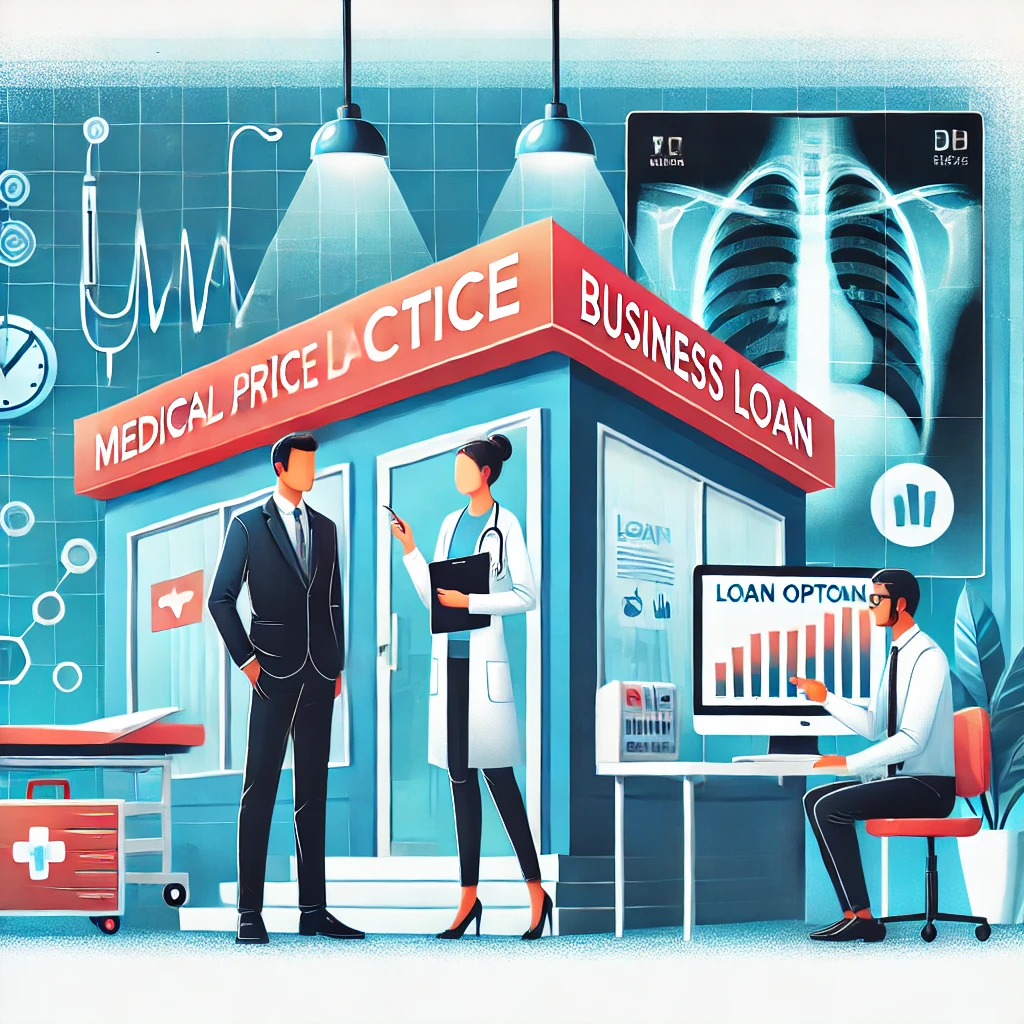Starting or expanding a medical practice can be a rewarding but costly endeavor. From leasing office space to purchasing state-of-the-art medical equipment, the financial requirements for setting up or growing a practice can be overwhelming. Medical practice business loans can provide the necessary funding to turn your vision into reality. This guide explores the types of loans available, their benefits, and how to secure the best financing for your medical practice.
Why Medical Practices Need Business Loans
Medical practices often require substantial upfront and ongoing investment. Here are some of the primary reasons why medical practitioners seek business loans:
1. Startup Costs
Starting a medical practice involves several initial expenses, such as:
- Leasing or purchasing office space
- Buying medical equipment and supplies
- Hiring staff and setting up payroll systems
- Obtaining licenses and certifications
2. Expanding an Existing Practice
Growth often requires significant financial resources. Expansion costs may include:
- Renovating or relocating to larger premises
- Adding new services or specialties
- Upgrading technology and equipment
3. Managing Cash Flow
Medical practices may experience cash flow challenges due to:
- Delayed insurance reimbursements
- Seasonal fluctuations in patient visits
- Unexpected expenses, such as equipment repairs
4. Acquiring an Established Practice
Purchasing an existing practice can be a great way to enter the field, but it typically involves a large initial investment.
Types of Medical Practice Business Loans
There are various financing options tailored to meet the unique needs of medical professionals. Below are the most common types of loans:
1. Term Loans
A term loan is a lump sum of money borrowed from a lender that is repaid over a fixed period with interest. These loans are ideal for significant one-time expenses like purchasing equipment or renovating a clinic.
Key Features:
- Fixed or variable interest rates
- Repayment terms ranging from one to ten years
- Predictable monthly payments
2. SBA Loans
Small Business Administration (SBA) loans are government-backed loans that offer favorable terms to small businesses, including medical practices.
Key Features:
- Lower interest rates
- Longer repayment terms (up to 25 years)
- Stringent eligibility criteria
3. Equipment Financing
This type of loan is specifically designed for purchasing medical equipment.
Key Features:
- The equipment serves as collateral
- Fast approval process
- Repayment terms aligned with the useful life of the equipment
4. Business Lines of Credit
A business line of credit provides flexible access to funds that you can draw on as needed.
Key Features:
- Only pay interest on the amount borrowed
- Renewable credit limit
- Ideal for managing cash flow
5. Practice Acquisition Loans
These loans are tailored for medical professionals looking to buy an existing practice.
Key Features:
- High borrowing limits
- Competitive interest rates
- Flexible repayment options
Benefits of Medical Practice Loans
1. Access to Capital
Loans provide immediate access to the funds needed to start or grow your practice.
2. Improved Cash Flow Management
Flexible loan options, such as lines of credit, can help manage cash flow gaps and ensure smooth operations.
3. Tax Advantages
Interest payments on business loans are often tax-deductible, reducing the overall financial burden.
4. Building Credit History
Timely repayment of loans can improve your business credit score, making it easier to secure financing in the future.
How to Qualify for a Medical Practice Loan
Qualifying for a loan requires preparation and meeting the lender’s criteria. Here are the key steps:
1. Check Your Credit Score
A good credit score is essential for securing favorable loan terms. Aim for a score of 680 or higher.
2. Prepare a Business Plan
A detailed business plan demonstrates your practice’s potential for success. Include information about:
- Your target market
- Revenue projections
- Operating expenses
3. Gather Financial Documents
Lenders will require financial documents, such as:
- Tax returns
- Bank statements
- Profit and loss statements
4. Choose the Right Lender
Research and compare lenders to find one that specializes in medical practice financing. Consider factors like interest rates, fees, and repayment terms.
Tips for Securing the Best Loan Terms
1. Build Strong Financials
Maintain a healthy debt-to-income ratio and ensure your practice’s financial statements are accurate and up-to-date.
2. Compare Loan Offers
Don’t settle for the first offer you receive. Compare multiple lenders to find the most favorable terms.
3. Negotiate Terms
Once you receive an offer, don’t hesitate to negotiate for better interest rates or repayment terms.
4. Leverage Industry-Specific Programs
Some lenders offer specialized programs for healthcare professionals with tailored benefits.
Common Challenges and How to Overcome Them
1. High Debt Levels
Medical professionals often graduate with significant student loan debt, which can affect loan approval. To mitigate this:
- Highlight your earning potential
- Show consistent revenue growth
2. Limited Business Experience
If you’re new to running a practice, lenders may view you as a higher risk. Strengthen your application by:
- Partnering with experienced professionals
- Providing a robust business plan
3. Stringent Eligibility Criteria
SBA loans and other favorable options often have strict requirements. If you don’t qualify:
- Consider alternative lenders or online financing options
- Explore smaller loans to build credit history
Conclusion
Medical practice business loans can be a valuable tool for launching, expanding, or sustaining a practice. By understanding the types of loans available, their benefits, and the application process, you can secure the funding needed to achieve your professional goals. Take the time to compare lenders, prepare a strong application, and negotiate terms to ensure your practice’s financial success.

